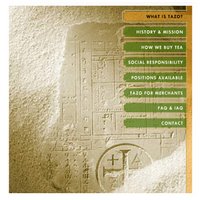
The goal of a university, is to provide students with the knowledge, skills and experience necessary to ensure a smooth transition into the workforce. A more philosophical approach to interpreting the purpose of higher education may yield a much different conclusion. Society as a cohesive whole is essentially the collaboration of each and every human being within the community. The concept of community is not restricted to cities, states or even countries. Instead, it may be expanded to encompass one continuous and unified world society which can be called humanity. Since the nature of humanity is colored by the character of each particular member of the populace, an idealized inference may assert that a change in the episteme of an individual may ultimately alter the structure and direction of society as a whole. It is by this theory, on a massive scale, that universities design and organize their
purpose: producing “students who are able to integrate knowledge, communicate, collaborate,…understand other perspectives and be active participants in a democratic society.”
The central mission of the University of Southern California is a document clearly stating the university’s specific
objectives with respect to the nature of the graduates it generates: “[T]he development of human beings and society as a whole through the cultivation and enrichment of the human mind and spirit.” In addition, it lists the primary
methods by which these goals are achieved: “The principal means by which our mission is accomplished are teaching, research, artistic creation, professional practice and selected forms of public service.” Undoubtedly, the core principle of this mission is richly infused with a sense of the tremendous impact a singular being can have on society. By gaining knowledge, an individual becomes more socially conscious and thus, has an enhanced ability to change the course of humanity.

After four years of education, research, and practice, a student’s capacity to be a productive and powerful member of society is confirmed by a hard-earned diploma. This diploma signifies to the world that the recipient effectively exhibits all aspects of his particular school’s mission. Many schools, including USC, take part in an
honorary degree program which, according the USC, is the “highest award that the University of Southern California confers.” This practice, according to James Freedman, finds its
origins in ancient Greece and Rome when “crowns of laurel, and oak [were] bestowed…to the patents of nobility…recognizing the worth of rare and excellent men….” An honorary degree is given by USC to an established person within the world society who has proven himself, through his actions and enterprises, to embody the epitome of USC’s ideals. For example, in May of 2005,
Neil Armstrong was given an honorary USC degree. As the first person to walk on the moon and a “brave and innovative explorer…dedicated citizen, educator, and war veteran,” Mr. Armstrong has unselfishly used his talents and knowledge of science for the benefit of society. He has clearly had an enormous impact on humanity as a whole, not only through space exploration but by giving people hope, passion and enthusiasm for the future.
One woman whom I earnestly believe is deserving of an honorary USC degree is Paula Deen. Growing up in Georgia, Ms. Deen married her childhood sweetheart with the explicit
goal of “…[being] the perfect wife, [and] the perfect mother.” Unfortunately, her dreams were crushed seven months later when her father died. Shortly after, her mother passed away as well, leaving Ms. Deen alone with two babies, a younger brother and a husband to care for. Although Ms. Deen found support in her husband, this luxury was short lived. In 1978, her husband lost his business and fell head first into extreme financial difficulties. Not having the emotional capabilities or adequate support system to deal with such a devastating situation, Ms. Deen plummeted into a state of
depression. She, in fact, explains that she became “scared…a nervous shell.” She developed agoraphobia, would not leave her home and would only get out of bed to eat. Clearly, this interfered with her life goal of being the perfect mother and wife to her family. Under duress, Ms. Deen decided it was time to start her life anew. She began by focusing on her children. In an attempt to incorporate her sons more fully into her new life, Ms. Deen launched the
Bag Lady, a small catering venture. She relied on the recipes her grandmother had taught her and used them to create bagged lunches which her children, Jamie and Bobbie, would take to local businessmen at work. Ms. Deen has relied on the knowledge of her craft and passion for the well being of her family to propel her into success.

Listed by USC’s honorary degree committee, the number one
motive for granting an honorary degree is to “honor individuals who have distinguished themselves through extraordinary achievements…” This qualification poses a bit of confusion, though; what constitutes an extraordinary achievement? Mike Martin, in his book entitled “
Meaningful Work,” explicates what he believes to be the standards and motives of “
extraordinary achievements.” Mr. Martin opens by quoting Adam Smith in his book, “
Wealth of Nations.” He calls attention to Mr. Smith’s theory that that it is not from compassion that one becomes a successful business person, rather, it is from self-interest. Self-interest here is presented in the form of monetary gains and reputation elevation, the visible measures of one’s success. Judged by these standards, Paula Deen is an extremely successful businesswoman. She has turned her limited assets into a multi-million dollar production. Paula now has two shows on the
Food Network, a popular
cookbook, a flourishing
restaurant, and most importantly, a reputation which surpasses her newly acquired wealth. She has, by Mr. Smith’s definition, been motivated by self-interest to accomplish many “extraordinary achievements” and is thus deserving of an honorary degree.
The
fourth point the USC honorary committee discusses as an important reason for bestowing an honorary degree is to “elevate the university in the eyes of the world.” A degree not

only proves each student’s aptitude and strength, but it binds the him to the university from which he graduated. In other words, it gives the university credit for any wonderful or ground-breaking endeavor he later accomplishes. Conversely, the university can also be recognized when one of its graduates acts in a destructive manner towards society. Thus, it is imperative for a school to put much effort into generating quality members of humanity in order to preserve its reputation. Although there is no certain method of choosing stable recipients of an honorary degree, a university can look at candidates' past actions to determine if his ethics and ideals are in synchronization.
A person’s morals are shaped by their past experiences and challenges. Paula Deen is a woman who overcame severe personal obstacles while beginning her career. However, the lessons she has learned from these experiences have convinced Ms. Deen to built her life around providing warmth and pleasure to others. Thus, enhancing society, the basis of USC’s mission statement, is also the foundation which has helped form Paula Deen’s career choices and successes. By the integrity of her personal accomplishments, Paula Deen’s association with USC by virtue of an honorary degree would definitely “elevate the university in the eyes of the world.”
Freedman emphasizes the relationship between school and honorary degree recipient as a long-lasting and important one.
Recipients in the past have “become sources of summer jobs, career counseling…professional opportunities and…personal encouragement.” Most important though is the support and hope a student experiences from seeing a personal role model or successful participant in their respective field receiving the highest honor possible by their home institution. This confirms within the student’s mind that their passions are real, respectable and valued within society. In addition, it helps the student understand that he, just as his role model, can change humanity. Granting Paula Deen the Doctor of Humane Letters, Outstanding Citizen degree would be an opportunity for USC to give its many students, who have perhaps unorthodox interests such as the culinary arts, courage to pursue their ambitions. This type of encouragement is especially important to students interested in less traditionally academic arenas. Many individuals in this situation feel that their desires may be perceived as superficial and thus inadequate. Paula Deen, though, proves that enthusiasm, hard work and an empathetic relationship with society can turn any hobby, occupation or interest into a significant, humanity-enhancing venture.

Despite these many positive aspects in awarding an individual whose expertise does not lie in traditional academic fields, there can be negative consequences. For instance,
Freedman suggests that graduates may feel that the integrity of their diploma is degraded by associating its principles with celebrities. A celebrity is any person who has amassed wealth or reputation simply on fame. This severely detracts from the diploma’s capacity to honor the hard-work, effort and struggle every student endures while attending college. True, Paula Deen is a celebrity and thus, her achievements may be perceived as trivial. Yet, Ms. Deen has proven that anyone, no matter where there passions lie, can be extremely successful and make a difference within society. These achievements give Paula the authority to be an exceptional role model for any student. Freedman asserts, in his
closing argument, that, "each honorand’s character and attainment [should be] worthy of emulation and admiration." Paula Deen's triumphs transcend the culinary arts as her integrity enhances and provides hope and inspiration to humanity.
Through her achievements, Paula Deen has helped alter society by offering encouragement to individuals who can emphasize with her childhood and share in her passions. In addition, she has surmounted the despair of a broken family, the depths of depression and poverty to become a successful business woman and loving mother. Most importantly, she has accomplished these great feats while retaining her integrity and compassion. Today, Paula Deen continues to warm the hearts, minds and bellies of her friends, family and patrons with her delicious, southern, home-cooked meals. In light of these achievements, I believe that Paula Deen is deserving of an honorary USC degree.





